You may have always been interested in Chinese culture and history but never have an opportunity to be here. This time, we offer you a 15-Day In-Depth Exploration of China. The Yangtze River is the longest in China and it is of great significance to Chinese people. After visiting Hong Kong and Beijing, the most prosperous parts of China, you can take the Yangtze River cruise and appreciate the scenery along the river. I believe the Yangtze River cruise tour from Hong Kong will fascinate you with its beauty. While you are on the cruise, you may pass by the Three Gorges and some rice terraces where farmers grow rice. The rice terraces are layer upon layer, glittering in the sunlight. This idyllic scenery will appeal to you. After the Yangtze River cruise and rice terrace appreciating, you will go on your downstream Yangtze River Cruise tour with golden triangle cities. Walking on the street of Shanghai and standing at the top of Shanghai World Financial Center, you will feel its unique charm formed in its long development. Have a stroll in the Yu Garden will bring you a moment of peace. I am sure you will have a deeper understanding of China after your 15-day tour.

Welcome to Hong Kong! As soon as you get off the plane, your tour guide will be waiting for you at the arrival hall. He or she will hold a sign with your name, so you will not miss him/her. Hong Kong is a free harbor and a cosmopolis. Hong Kong is a place that integrates eastern culture and western culture, combining Chinese wisdom with western social management experience. Located in the southeast part of China, Hong Kong has a population of about 7.47 million. I bet this charming place will impress you with both its culture and economic prosperity.
After breakfast, you will take the Peak Tram to Victoria Peak. As early as 1868, Sir MacDonald, governor of Hong Kong built a villa here to spend the summer and enjoy the coolness at the peak. Later, living at Victoria Peak became a fashion and more rich people as well as celebrities started to live here. Living here has become a representation of status. As you take the Peak Tram to ascend the peak, you can appreciate the beautiful scenery along the way. The Peak Tram has witnessed the development of Hong Kong in the last century. Some films and TV series have taken this place as their shooting location, such as Soldier of Fortune and Love Boat. Peak Tram was originally built to bring convenience to celebrities living at the peak, and later became a popular sightseeing tram for tourists. At first, the Peak Tram was powered by burning coal. In 1926, electricity replaced coal to provide power to the tram. When you stand at the Sky Terrace, the viewing platform on the peak, you can oversee the gorgeous scenery of the beautiful Victoria Harbor. We hope you can relax here and have a nice time.
Your next stop today is Stanley Market. Stanely Market is located at the southern tip of Hong Kong and attracts many visitors all over the world, with Stanely Bay and Narcissus Temple in the south, Murray House and Stanely Square in the east. There are many Tang Buildings (an architectural style from the late 19th century to the 1960s in South China, Hong Kong, Macau, and even Southeast Asia.) where many popular shops are located. If you get inside the shops and have a look, you will not leave without shopping. A dizzying array of choices, such as Chinese handicrafts, postcards, traditional Chinese clothing, and oil paintings will meet all your needs. Even the residents will come here and pick up their favorite commodities. Bargaining with the local shoppers will bring you a fun experience and get a glimpse of the unique charm of Stanely Market. Seeing the busy scene of Stanely Market, you will not believe that Stanely used to be a remote village harassed by tigers. A piece of tiger skin is still in display in Tin Hau Temple nearby the market. After having a stroll at the market area, you can go to the bars or restaurants here, and sip a glass of wine and appreciate the scenery at the beach.
Next, you can go to Repulse Bay. Repulse Bay is not far away from the Stanely Market. If you are a Chinese literature fan, you will find that a classical scene in A Love Story in the Ruined City by Ailing Zhang (a famous novelist in China) happened in a restaurant at Repulse. The Repulse Bay is teamed with visitors in summer. Many tourists go to the beach to enjoy a leisure afternoon or swim for a while. Even in winter, the youngsters in swimsuits are often seen on the beach. If time permitted, you can bring your swimsuits and join them to enjoy the sunshine at “Oriental Hawaii”, as some often refer to Repulse Bay. At the southeast of Repulse Bay, there lies Zhenhai Tower, a classical building with the paintings of dragons hovering at the roof. The Hong Kong Life Saving Society, a non-governmental volunteer organization, takes this place as its office. It aims at reducing incidents of drowning. The organization was founded in 1956 by a group of kind-hearted people who are now members of International Life Saving Society. I believe you can swim without worrying about your safety because of their existence. Finally, at the end of the day, you will be transferred to the hotel prepared for you and have a good rest.

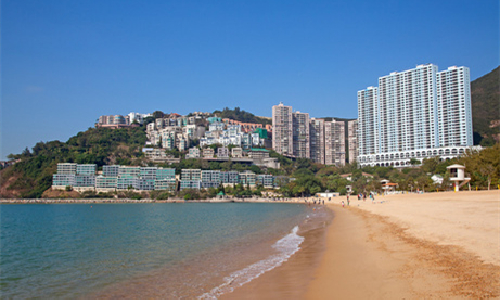
 Beijing
Beijing In the morning, your tour guide will pick you up at the hotel and take you to the airport. It’s time to leave Hong Kong. You will take the estimated flight CA112 14:35/17:55 to Beijing. In most people’s minds, Beijing is a city with rich culture and long history. After enjoying the busy life in Hong Kong, you can have a stroll in the Summer Palace and the Forbidden City, feeling the unique culture and history of Beijing, the capital of China. Upon your arrival, your tour guide will welcome you sincerely and show you the itinerary tomorrow. If you have any questions about the arrangement, feel free to contact us.
Today, your first destination is the Ding Tomb of the Ming Tombs. The Ming Tombs are located at the foot of Tianshou Mountain with a total area of 120 square kilometers, about 50 kilometers away from Tian’anmen Square in the city center. We will drive northeast for about an hour to reach this place. Since the 7th year of Yongle Emperor’s reign in the Ming Dynasty (1368-1644), emperors in the following years had ordered workers to build tombs for them. During the following 230 years, 12 tombs for the emperors, 7 imperial concubines’ tombs, and a eunuch tomb was built. By now, only Chang Tomb, Ding Tomb, Zhao Tomb, the Sacred Way, and Kang Tomb are open to the public. Ding Tomb was built in 1584, covering an area of 182,000 square meters. The 13th emperor of the Ming Dynasty, Emperor Wanli and his two Empresses were buried here. When the construction of Ding Tomb was finished, the emperor was only 28 years old, so the tomb was empty for about 30 years. Ding Tomb is the largest one among the 13 tombs. In 1958, archaeologists excavated Ding Tomb and were amazed at the luxurious layout of the tomb as well as the treasures buried with the emperor. However, due to limited technology at that time, Ding Tomb wasn’t protected well after the excavation. There is a story about the emperor and one of his imperial concubines. The emperor didn’t love his empress and decided to make the concubine’s son his successor. However, ministers were strongly against his decision. Emperor Wanli was angry about not being able to exercise power at his will and refused to go to the imperial court. At the last moment of his life, he left a message that he wanted to be buried with his beloved concubine, but was refused by the ministers.
After lunch, you will visit the Badaling Great Wall. It will be about 1 hour’s drive towards the west (about 40 kilometers). The Badaling Great Wall is the greatest defense project of ancient China, part of the Great Wall of the Ming Dynasty. The Badaling Great wall has the geographical advantage - easy to defend the enemies, which makes it of military importance. It is also a vital traffic artery towards Shanxi Province, Inner Mongolia, and many other places. Some say that the building of Badaling Great Wall started 1,500 years ago during the Northern Wei Dynasty (386-524), and then it was extended from Datong, Shanxi Province (in the west of China) to Shandong Province (in the east of China). In the year 1505 in the Ming Dynasty, the Badaling Great Wall was rebuilt and it took more than 80 years to finish the construction. There is a legend about the Great Wall. The Badaling Great Wall was meant to be built in the most dangerous place. However, there weren’t cranes and other modern machines, so the workers had to lift the heavy stones to the top of the mountain. Due to the harsh environment, physical exertion, and inadequate food, many laborers died on the construction site. Yen-Wang-Yeh (King of the Hell) ordered his servants to take the dead laborers to the Palace of Hell (Chinese believe that when they die, their souls will go to the Palace of Hell). However, the Town God who was in charge of the household registration of the mortals refused King of the Hell to take them there because they were not supposed to die yet. The laborers were dead because of the heavy work and hunger. The Jade Emperor (Master of all gods) heard about this and endowed golden pots that can make enough food and shovels which can lift heavy stones easily to the laborers. With the help of the pots and shovels, there were no further deaths caused by hunger or heavy work anymore.
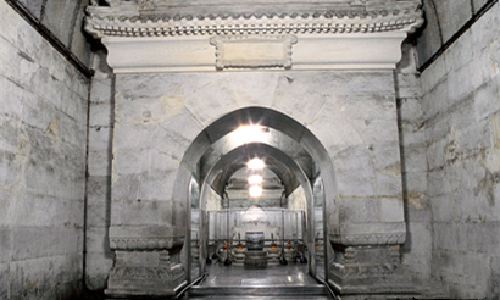
Today, you will firstly head to Tian’anmen Square. Tian’anmen Square was built in 1417 in the Ming Dynasty. It was an important place to hold grand ceremonies and anounce imperial decrees in the Ming and Qing (1636-1912) Dynasties. Tian’anmen Square is also a representation of imperial authority. When we go to Tian’anmen Square now, we find it so grand and it represents the prosperity as well as strength of China. However, in ancient China, Tian’anmen Square was sometimes frightening, because the cases that sentenced prisoners to death will be reported to the emperor here in each lunar August.
Your next stop in the morning is the Forbidden City (closed each Monday). The Forbidden City is a royal palace of the Ming and Qing Dynasties, located at the center of the central axis in Beijing. It modeled after the building style of the Forbidden City in Nanjing. In 1925, the Palace Museum opened to the public where you can know about the history of the Forbidden City and its precious collections, such as paintings and books of ancient times, jade wares, as well as exquisite porcelains. If you look at the map of the Forbidden City, you will find it in the shape of a rectangle and the buildings are balanced on both sides with a river surrounding the palace. The Forbidden City has more than 70 palaces and 9,000 houses. You may wonder where the emperor will go to sleep. If it’s me, it will take me forever to think about which place to live in. It seems that in the ancient times, no one knew where the emperor would stay at night either. That was kept a secret to prevent the emperor from assassination after an incident when a concubine tried to kill him at night. You can walk around the Forbidden City and go to some of the halls, such as the Palace of Heavenly Purity, the Hall of Union, and the Hall of Mental Cultivation. The luxury settings and the objects used by the emperors or empresses will certainly impress you.
After lunch, you will go to the Temple of Heaven and experience the sacrificial culture of ancient China. The Temple of Heaven was built in 1420 and rebuilt during the reign of Emperor Qianlong and Guangxu of the Qing Dynasty. Emperors of ancient China used to pray for bumper harvest here. According to history, more than 2,000 years ago, people in the Xia Dynasty (2070BC-1600BC), the first dynasty in Chinese recorded history, began to offer sacrifice to heaven. The process of sacrifice would last for days and abundant sacrificial offerings would be offered to heaven. The emperors would come to the sacrificial altar and bow, kneel, as well as kowtow to show their sincerity. However, when the Temple of Heaven was originally built by Emperor Zhu Di, the purpose was to cover up the fact that his power was not inherited from his predecessor but was usurped by waging a war. Therefore, he built the Temple of Heaven to tell his people that he was the one chosen by heaven to better reign them. The Temple of Heaven was built symmetrically. Walking around inside, you can appreciate the attractive scenery and feel surprised at the wonder of the Echo Wall, which can reflect your sound if you speak aloud to it.
Your last destination today is the Summer Palace. The Summer Palace used to be a royal garden of the Qing Dynasty, located in the west suburb of Beijing. We will drive northwest for about 1 hour (about 30 kilometers) to get there from the Temple of Heaven. The palace was originally built by Emperor Qianlong as a present to his mother, Empress Dowager Cixi. Later, it was rebuilt by Emperor Guangxu as a palace to spend the summer. The Summer Palace is a large-scale landscape garden with an area of 3 square kilometers. It was built based on Kunming Lake and Wanshou Hill. The lake area has taken three-fourths of its total area. The Long Corridor, 17 Arch Bridge, and Marble Boat are places that you can’t miss. With a long history, there are many legends about the Summer Palace. It is said that Empress Dowager Cixi imagined herself being the Queen Mother of the West ( a god who is in charge of marriage and birth in Chinese myths). Therefore, Cixi wanted to build the Summer Palace into a heavenly place on earth. She assimilated Kunming Lake to the Milky Way, the Bronze Ox on the left side of Kunming Lake to the Cowherd, and the Vega Pavilion in the right to the Girl Weaver (The Cowherd and the Girl Weaver are a loving couple being separated because of the Queen of Mother in the West and can only look at each other through the Milky Way). One day the Bronze Ox came alive and jumped into the lake. Then Cixi made craftsmen create a new one. Sooner after its building, the ox was alive again and the servants of Cixi tried to stop it from running away and pulled off its tail. However, if you come here and see the Bronze Ox, you will find its tail is still there. That’s because the craftsmen had fixed it. Come here and have a walk in the Summer Palace. No matter the buildings or the scenery here, they will bring you a refreshed experience and a moment of inner peace.

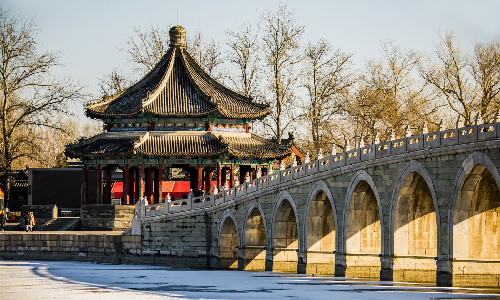
 Xi'an
Xi'an This morning, you will be transferred to the airport and take the estimated flight CA1209 09:55/12:10 to Xi’an. Like Beijing, Xi’an is a famous cultural city with a long history. It used to be the capital of more than a dozen dynasties. Terra Cotta Warriors and Horses Museum, Big Wild Goose Pagoda, and the Ancient City Wall are the places you cannot miss when you visit Xi’an. Welcome to Xi’an and hope you have a nice trip.
As soon as you arrive in Xi’an, your tour guide will pick you up and take you to the Big Wild Goose Pagoda. It was built in the 3rd year of Emperor Yonghui in the Tang Dynasty (618-907) to store the Buddhist texts and Buddha figures brought back by Xuanzang, a monk who traveled to ancient India through the Silk Road. The Big Wild Goose Pagoda has 7 stories. It is a landmark building that combines Chinese culture with Buddhism from ancient India. Xuanzang’s journey to ancient India is an adventure because he spent 3 years on the way and experienced various hardships and setbacks to finally get to the holy land of Buddhism. You can imagine how hard it will be if a person without modern vehicles manages to go to a place that is 25,000 kilometers away. Later, Xuanzang stayed in ancient India and learned Buddhism from a famous Buddhism Master and spread the doctrine when he got back. Journey to the West, one of the classic novels in China was adapted from Xuanzang’s story.
Next, your tour guide will take you to Ancient City Wall. The Ancient City Wall was built in 1374 in the Ming Dynasty, based on the imperial city of Chang’an (the ancient name of Xi’an) in the Tang Dynasty. The Ancient City Wall is an enclosed rectangle with a height of 12 meters and a width of about 15 meters. It stretches from the east to the west with a length of about 3,000 meters. the Ancient City Wall is adequately equipped with drawbridges, sluice gate towers, turrets, watchtowers, parapet walls, and crenels which can be used to defend enemies and protect people living inside. The unique charm of the wall has attracted a lot of celebrities here. It is said that Clinton, the former president of the United States was charmed by the scenery of Xi’an and the Ancient City Wall, so he prolonged his tour in Xi’an for a week to appreciate its beauty. I can assure you that you will be fascinated at the first glance.
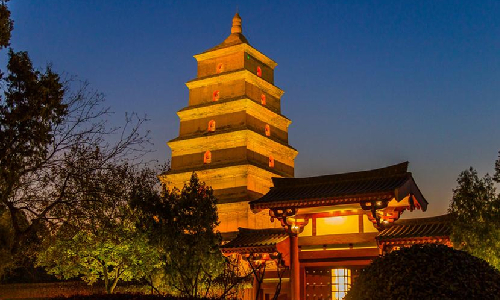
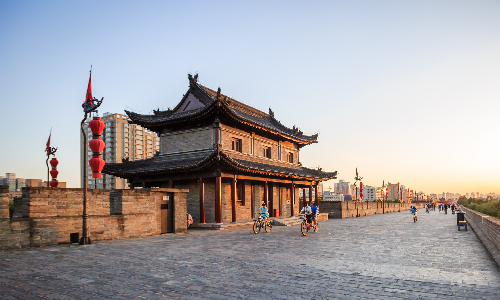
| City | Five Star hotel list | Four Star hotel list |
|---|---|---|
| Hong Kong | Harbour Grand Kowloon | Harbour Plaza North Point Hotel |
| Beijing | Sunworld Dynasty Hotel Beijing Wangfujing | Sunworld Dynasty Hotel |
| Xian | Tianyu Gloria Grand Hotel Xi'an | Xian Grand Dynasty Culture Hotel |
| Guilin | Lijiang Waterfall Hotel | Guilin Park Hotel |
| Shanghai | Ocean Hotel Shanghai | Courtyard by Marriott Shanghai Central |
 |
![]() About your child or infant, please contact us for a discounted price.
About your child or infant, please contact us for a discounted price.



We started with a few days in Beijing & ended in Shanghai, from where we visited the Forbidden City and Great Wall. In between we visited Terra Cotta Warriors Museum, Panda Base, Shanghai Disneyland.

We had a wonderful holiday in China which will remain long in the memory. China is a breathtakingly beautiful country full of splendid temples and palaces, mountains and rivers, peaceful rural scenes and bustling shopping streets.
 QUICK ENQUIRY
QUICK ENQUIRY